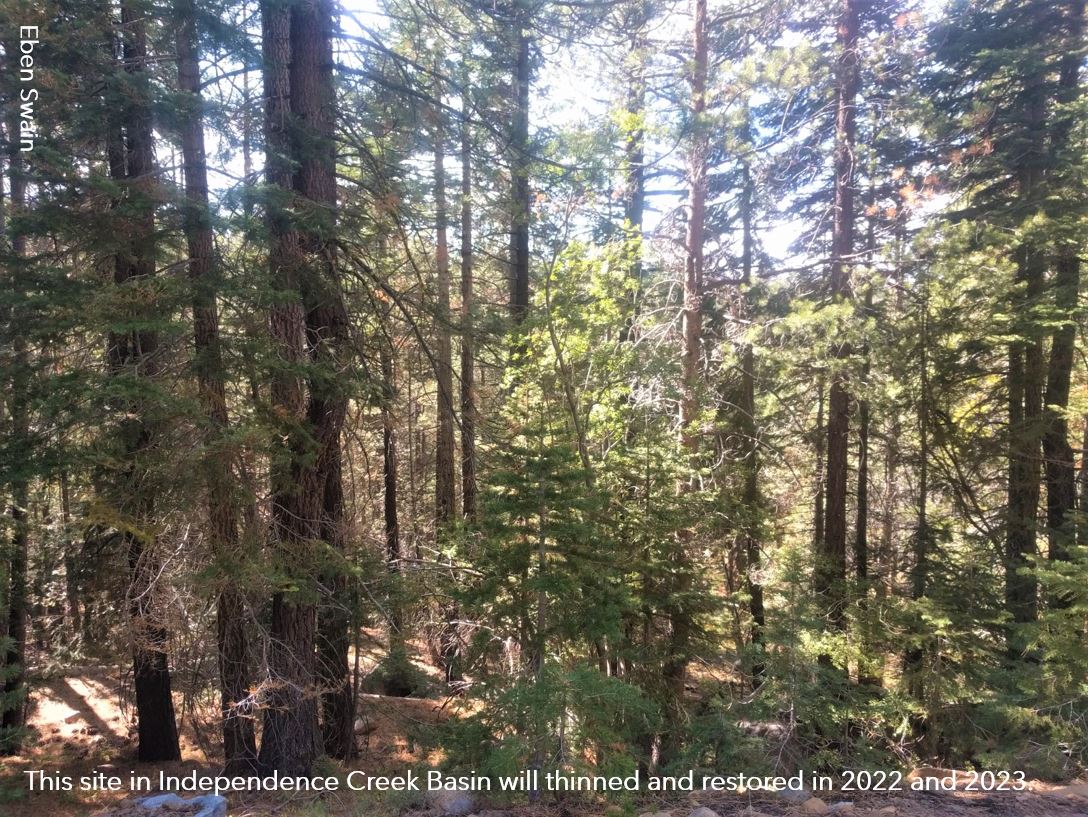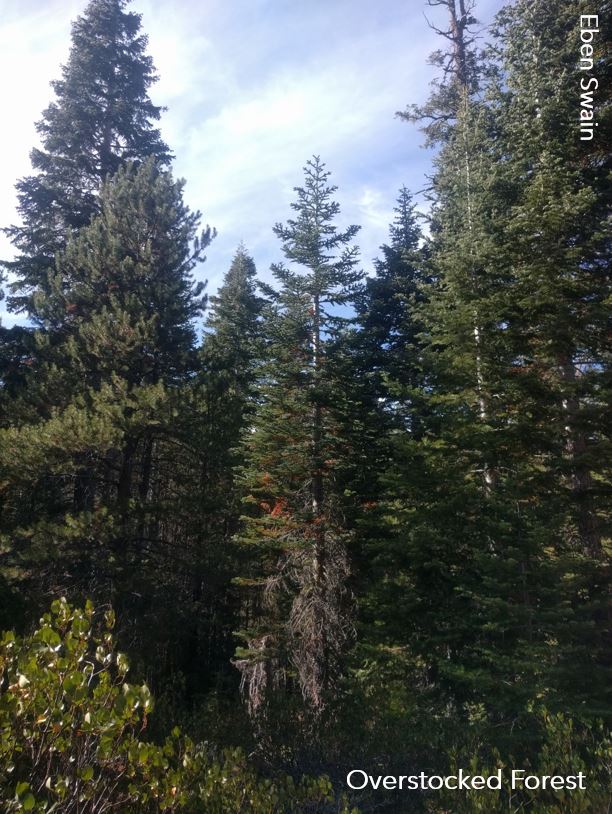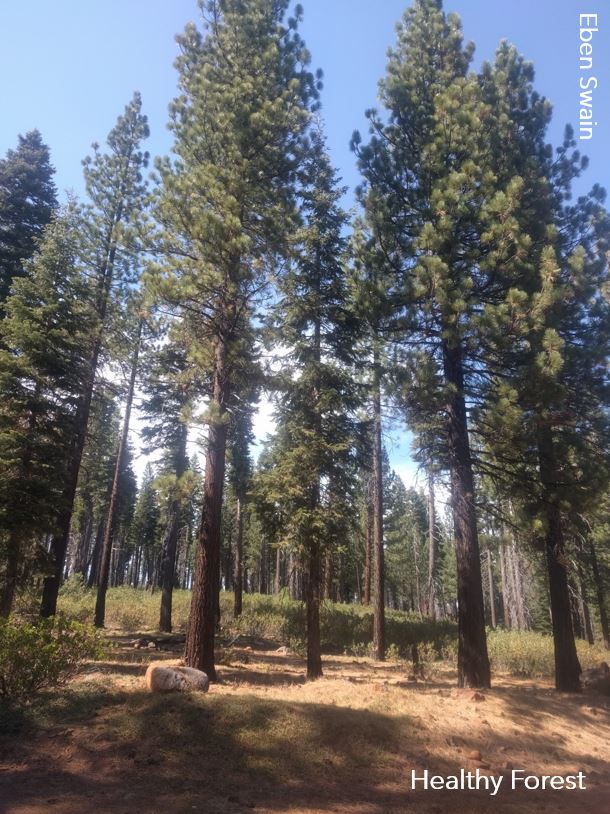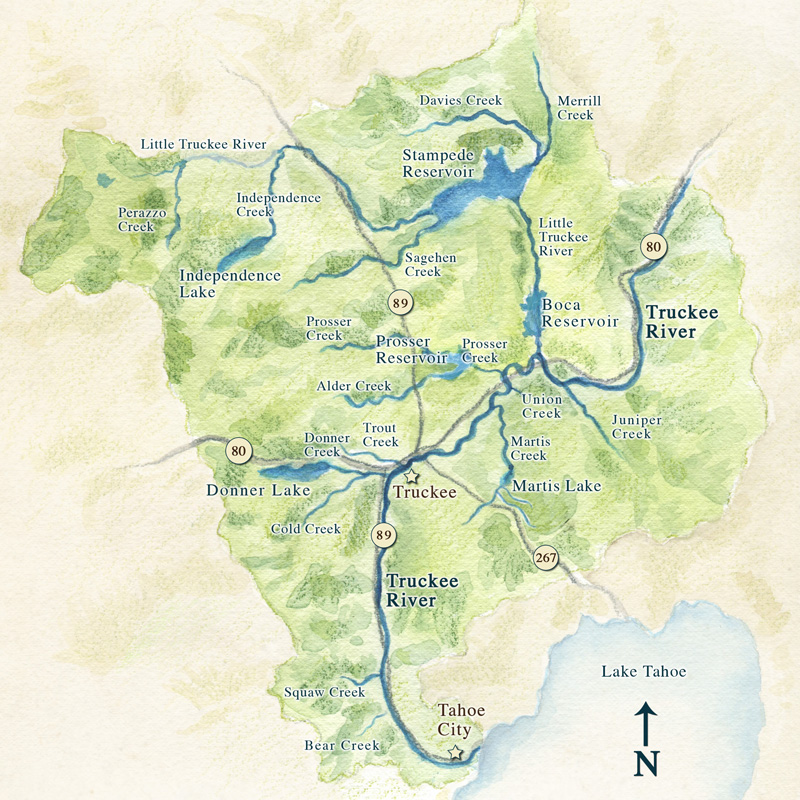Healthy Forests – We’ve Done A Lot and We Can Do More
We’ve deployed over $1 million for healthy forests in the past decade – and we are ready to do more.
We convened and facilitated the Sagehen Collaborative Forest Project. In the Dry Creek watershed (near Russel Valley) we implemented hundreds of acres of forestry thinning and restoration. We’ve removed invasive weeds (which spread fires) on thousands of acres. We are now working in the Independence Creek watershed thinning and restoration hundreds of acres. And, we’ve recently finished a Forest Health Assessment for the Middle Truckee River Watershed, a forestry action plan for the entire watershed based on 18 months of comprehensive data analysis.

Making our forests fire-resilient
Restoring 50,000 acres of forests Reintegrating fire Increasing the use of prescribed fire to help address the challenges of a long history of fire suppression. Supporting the traditional ecological knowledge of fire as a tool for maintaining healthy forests.
A healthy forest stand has varying density, species, age, and canopy cover – including areas with tall, dispersed trees and other areas with denser mixes of trees and shrubs – to support diverse wildlife and habitat.
Healthy forests reduce competition for limited water resources allowing forests to thrive and promote the movement of water through the infiltration into the ground, photosynthesis, and evaporation. |


Where it
all happens
We have worked on forest health projects including Independence Creek Basin, Sagehen Creek Basin, and Dry Creek basin and will continue throughout the watershed at 20 priority sites identified in the Forest Health Assessment.
Fast Facts
Scale: over 50,000 acres
Location: Middle Truckee River Watershed
Species: Jeffrey, ponderosa, lodgepole, and sugar pine; incense cedar; red and white fir; black cottonwood; red willow
Partners and Funders: Sierra Nevada Conservancy, USFS Tahoe National Forest, National Forest Foundation, USFS Tahoe National Forest – Sierraville Ranger District

Timeline

Dig
deeper
To learn more about the 20 forest health priority project sites, check out the complete Middle Truckee River Watershed Forest Health Assessment technical report.
